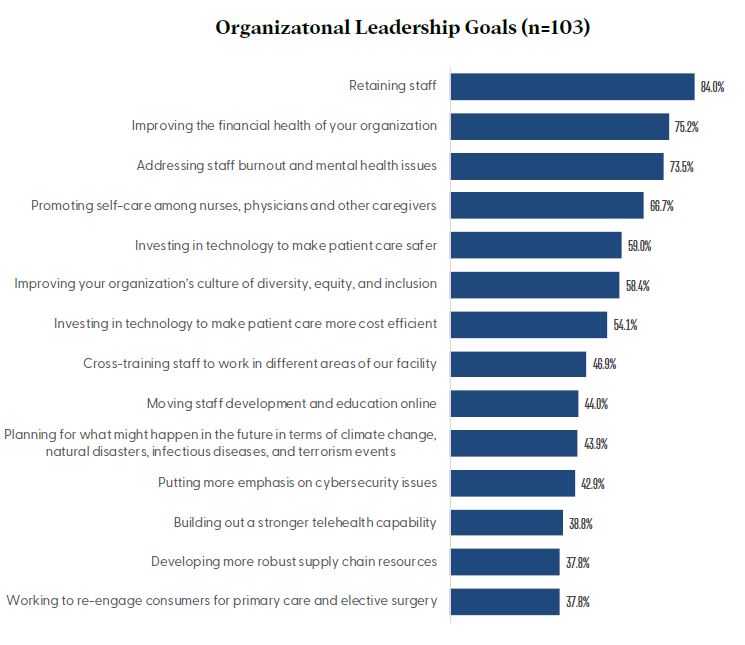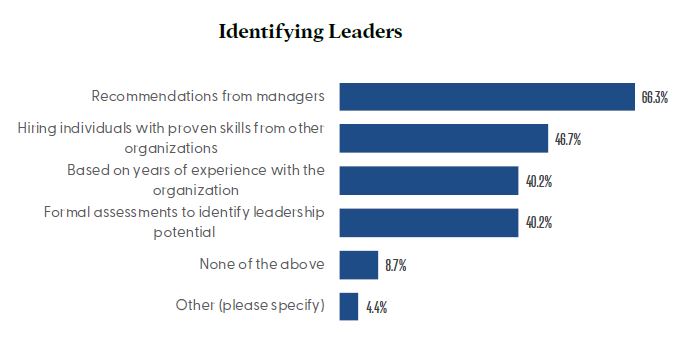Published: December 20th, 2021
Published: December 20th, 2021
Healthcare leaders face a daunting future. There is continued uncertainty about our nation’s ability to curb the current COVID-19 pandemic. Beyond that, there is the need to retool existing processes to meet the needs of a new decade. There are mounting cybersecurity threats and a push to incorporate new technologies. There are new competitors to traditional healthcare delivery systems as well as the need to develop new partnerships in order to grow in the direction of future demand. At the same time, healthcare staff are experiencing high levels of burnout and suffering mental health issues due to their traumatic work environment. Many staff are retiring; many more are deciding to leave bedside care prematurely.
Many are wondering if existing leadership is up to the challenge.
The situation is summed up by a recent article in the New England Journal of Medicine Catalyst:
“Our current health care systems are not well-structured to address these problems. Transforming them will require a combination of short- and long-term solutions built on system-level resilience and leader effectiveness…the industry must wrestle with not only what this means for health care delivery, but more importantly, what this means for successful leadership” (Lobdell et al., 2020).
Facing these challenges, many leaders see a need to focus on their own professional development. Many lack experience in leading innovation efforts of this magnitude or helping staff move forward following traumatic stress.
Leaders are looking for ways to expand their skill sets and acquire competencies that position them for success in the coming decade.
To explore these leadership needs in more detail, HealthStream recently surveyed 239 healthcare leaders to ask about the hurdles they were facing and the areas of leadership development they felt would benefit them most. Following are some of our findings.
1. Leaders see a need for personal improvement in numerous areas.
Of the 14 items measured in the survey, half or more of all leaders noted they would like to improve personally in 12 of them. The top three priorities were:
- Implementing organizational changes
- Improving communication skills
- Handling burnout and anxiety
Q. What are the top leadership goals you have for yourself over the next 12 months related to improvement? Please rate the priority you are placing on each of the areas below on a scale of 1 (low priority) to 10 (high priority). [Percentages below reflect the % of respondents giving each item a rating of 8, 9 or 10.]

2. Staff, financial, and technological issues top the list of organizational needs
Leaders also indicated they had numerous organizational goals in addition to their personal goals. More than half reported they were placing high priority in seven areas.
A number of the top priorities focused on staff retention and well-being. Four of the top seven priorities included:
- Retaining staff
- Addressing staff burnout and mental health issues
- Promoting self-care among nurses, physicians and other caregivers
- Improving your organization’s culture of diversity, equity and inclusion
The additional priorities in the top seven included areas related to financial performance and technology:
- Improving the financial health of your organization
- Investing in technology to make patient care safer
- Investing in technology to make patient care more cost effective
Q. What are the top leadership goals you have for your organization over the next 12 months? Please rate the priority you are placing on each of the areas on a scale of 1 (low priority) to 10 (high priority).[Percentages below reflect the % of respondents giving each item a rating of 8, 9 or 10.]

3. Most did not know the 2021 budget for training or indicated there was nothing budgeted
More than one-third of the leaders who responded to the survey (37.3%) did not know how much was budgeted for leadership training in 2021.
Despite its importance for the future, approximately one in five (19.6%) reported that nothing was budgeted for leadership training in 2021.
Some one in four (24.5%) noted that $20,000 or less was budgeted.
Q. What is your budget for leadership training in 2021?

4. Online courses were the preferred training format
The vast majority of leaders selected “online courses” as their preferred training format (82.8%).
“Webinars” and “instructor-led sessions” were also mentioned by a majority of respondents.
Q. Which formats are you interested in for your leadership training? (Please select all that apply.)

5. Most leaders rely on other managers in their organization to identify and recommend up-and-coming leadership talent.
Two-thirds of leaders (66.3%) say they rely on recommendations from managers to identify employees with possible leadership skills.
Q. What approach do you use to identify people with the talent and potential to lead? (Please select all that apply.)

Observations
Healthcare leaders across the continuum of care acknowledge the need for leadership development at both the personal and organizational level. The majority of respondents to our survey identified a number of priorities at both the personal and organizational level. Personally, leaders placed highest priority on developing their skills in leading organizational change. As an organization, the top priority is addressing staff issues such as retention and burnout.
The majority of respondents want online course options for their leadership development. While healthcare leaders have traditionally relied on in-person development options, both technological advances and the realities of a pandemic have coupled to change learning preferences.
While leaders see the need for development for both themselves and their organization, money may not be budgeted to support the breadth of training that leaders say they want. If leaders truly believe that leadership development is a priority for future success, they will need to take steps to fund the necessary training.
Most leaders do not have a standardized, objective method of identifying leadership potential within their own organization.
They are relying on their managers to recommend talent. These leaders may benefit from readily available tools that can accurately assess potential throughout the organization and help pinpoint specific talents to specific leadership roles.
Learn more about HealthStream's Leadership Development Solutions >
About the Survey
HealthStream conducted this survey among healthcare leaders nationally during the 2nd Quarter of 2021. Some 293 leaders responded. Most were aged 35 – 64 (92.9%) with 45 – 54 year-olds comprising the largest age group (41.7%). Nearly three-fourths (73.8%) have been in the healthcare industry for more than 20 years. Respondents worked in either an acute care hospital (37.7%) or a skilled nursing facility (33.5%). Most were part of either Executive Leadership (28.0%) or Nursing (63.8%).
Reference
Lobdell, Kevin W. MD et al., “Improving Health Care Leadership in the COVID-19 Era,” New England Journal of Medicine (NEJM) Catalyst, June 4, 2020, https://catalyst.nejm.org/doi/full/10.1056/CAT.20.0225
Article Author
Robin L. Rose, MBA
Vice President, Healthcare Resource Group
HealthStream
